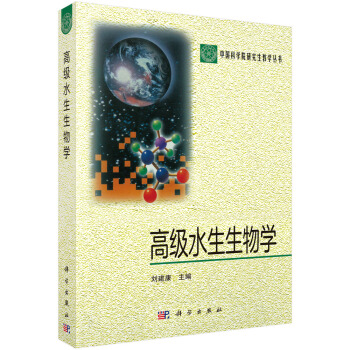![婦産科學(英文原版改編版留學生與雙語教學用) [Obstetrics and Gynecology]](https://pic.windowsfront.com/12154654/58d8b04dN1d00982d.jpg)

具體描述
編輯推薦
正版原版,原汁原味,留學生與雙語教學用。內容簡介
本書係統地介紹瞭婦産科學的基本知識,包括婦産科的解剖、生理、孕産期保健、産科常見並發癥和閤並癥及各種婦科疾病的診斷與治療等。內容簡明易懂,圖文並茂,適閤作為臨床醫學專業本科生中英文雙語教學、留學生英文教學、碩士研究生和博士研究生教學的婦産科學教材。本書也可以作為其他醫學相關專業學生和青年醫生學習婦産科學的參考教材。作者簡介
薛鳳霞,天津醫科大學總醫院婦産科行政主任,教授,博導。中華醫學會婦産科分會常委,中華婦産科雜誌編委,從事國際學院、7年製教學多年。國傢十一五教材《婦産科學》編委,全國高等醫藥院校教材《婦産科學》五年製、七年製編委。主持國傢自然基金等科研項目10餘項。獲得天津市科技進步奬等多項奬項。內頁插圖
目錄
Section One Basic Sciences in Obstetrics and Gynecology1 Anatomy… ……………………………………………………………………………………………………… 3
2 Reproductive Physiology………………………………………………………………………………………… 33
3 Conception, Fertilization and Implantation… …………………………………………………………………… 51
4 Fetal Growth, Placenta and Umbilical Cord……………………………………………………………………… 62
5 Embryology… …………………………………………………………………………………………………… 78
Section Two Gynecology
6 Gynecological History and Clinical Examination………………………………………………………………… 91
7 Pediatric and Adolescent Gynecology… ………………………………………………………………………… 96
8 Gynecological Infection and STD………………………………………………………………………………… 105
9 Amenorrhea… …………………………………………………………………………………………………… 139
10 Abnormal Uterine Bleeding… ………………………………………………………………………………… 148
11 Infertility………………………………………………………………………………………………………… 158
12 Polycystic Ovarian Syndrome (PCOS)… ……………………………………………………………………… 174
13 Hirsutism………………………………………………………………………………………………………… 180
14 Menopause……………………………………………………………………………………………………… 184
15 Benign Lesions of the Vulva and Vagina………………………………………………………………………… 192
16 Benign Disorders of the Uterine Cervix………………………………………………………………………… 202
17 Benign Disorders of Uterine Corpus (Fibroids, Adenomyosis and Endometrial Polyp) ………………………… 206
18 Benign Adnexal Masses… ……………………………………………………………………………………… 222
19 Premalignant and Malignant Disorders of the Vulva and Vagina… …………………………………………… 234
20 Premalignant and Malignant Disorders of the Uterine Cervix… ……………………………………………… 244
21 Premalignant and Malignant Disorders of the Uterine Corpus… ……………………………………………… 267
22 Premalignant and Malignant Disorders of Ovaries and Fallopian Tubes………………………………………… 278
23 Gestational Trophoblastic Diseases……………………………………………………………………………… 291
24 Endometriosis…………………………………………………………………………………………………… 299
25 Pelvic Organ Prolapse (POP)…………………………………………………………………………………… 309
26 Urinary Incontinence…………………………………………………………………………………………… 321
27 Genital Ambiguity and Intersexuality…………………………………………………………………………… 333
28 Contraception…………………………………………………………………………………………………… 341
Section Three Obstetrics
29 Preconceptional Counseling, Physiological Changes in Pregnancy and Antenatal Care………………………… 365
XIV
Contents
30 Normal Labor…………………………………………………………………………………………………… 393
31 First Trimester Vaginal Bleeding………………………………………………………………………………… 415
32 Recurrent Pregnancy Loss and Bad Obstetrical History………………………………………………………… 436
33 Late Pregnancy Complications… ……………………………………………………………………………… 442
34 Third Trimester Bleeding… …………………………………………………………………………………… 464
35 Disproportionate Fetal Growth… ……………………………………………………………………………… 478
36 Multiple Pregnancy……………………………………………………………………………………………… 485
37 Disorders of Amniotic Fluid… ………………………………………………………………………………… 494
38 Special Cases in Obstetrics… …………………………………………………………………………………… 499
39 Hypertensive Disorders in Pregnancy…………………………………………………………………………… 502
40 Diabetes Mellitus and Pregnancy………………………………………………………………………………… 514
41 Hematological Disorders in Pregnancy… ……………………………………………………………………… 521
42 Cardiac Disease in Pregnancy…………………………………………………………………………………… 532
43 Thyroid Dysfunction with Pregnancy…………………………………………………………………………… 539
44 Jaundice, Hepatitis and Gastrointestinal Disorders in Pregnancy………………………………………………… 544
45 Renal Disorders in Pregnancy…………………………………………………………………………………… 551
46 Nervous System Disorders in Pregnancy………………………………………………………………………… 556
47 Asthma in Pregnancy… ………………………………………………………………………………………… 561
48 Local Abnormalities……………………………………………………………………………………………… 565
49 Infection During Pregnancy… ………………………………………………………………………………… 573
50 Malpresentation and Malposition……………………………………………………………………………… 581
51 Dystocia and Cephalopelvic Disproportion……………………………………………………………………… 600
52 Postpartum Hemorrhage………………………………………………………………………………………… 609
53 Puerperium……………………………………………………………………………………………………… 621
54 Essential of Normal Newborn Assessment and Care… ………………………………………………………… 628
55 Special Topics in Obstetrics……………………………………………………………………………………… 636
56 Critical Care Obstetric…………………………………………………………………………………………… 657
Section Four Appendices
Appendix 1 Investigations in Gynecology… ……………………………………………………………………… 667
Appendix 2 Operative Obstetrics…………………………………………………………………………………… 677
Appendix 3 Fetal Medicine………………………………………………………………………………………… 699
Appendix 4 Drug Use in Pregnancy………………………………………………………………………………… 701
Appendix 5 Psychological Aspects in Obstetrics and Gynecology… ……………………………………………… 703
Section Five Annexures
Annexure 1 Medical Eligibility Criteria for Initiation and Continuation of Intrauterine Devices (IUDs)… ……… 711
Annexure 2 Medical Eligibility Criteria for Initiation and Continuation of Combined OCs/Combined Injects/
Transdermal Patches and Vaginal Rings… …………………………………………………………… 714
Annexure 3 Medical Eligibility Criteria for Emergency Contraceptive Pills (ECPs)… …………………………… 717
Annexure 4 Normal Values in Pregnancy… ……………………………………………………………………… 718
Annexure 5 Indications and Risks of Common Vaccines During Pregnancy……………………………………… 720
精彩書摘
Conception, Fertilization3
and Implantation
A baby is God’s opinion that the world should go on.
introdUction
Life begins when an oocyte is fertilized by sperm. The union of egg and sperm at fertilization is one of the most important process in biology.
Gametogenesis is the process involved in the maturation of two highly specialized cells (spermatozoon in male and ovum in the female) before they unite to form zygote.
oogenesis
The process involved in development of mature ovum is called oogenesis. The primitive germ cells take their origin from the yolk sac at about the end
of 3rd week of intrauterine life and their migration
to the developing gonadal ridge is completed round about the end of 4th week. In female gonads the germ cells undergo a number of rapid mitotic divisions and differentiate into Oogonia. The numbers of oogonia are maximum at 20th week, which number about 7 million. While the majority of oogonia continue to
divide, some enter into the prophase of first meiotic
division and are called primary oocytes. Primary oocyte is surrounded by flat cells and is called primordial follicle which are present in the cortex of the ovary. After birth there is no more mitotic division and all oogonia are replaced by the primary oocytes
which have finished the prophase of the first meiotic
division and remain in the resting phase (dictyotene stage) between prophase and metaphase. Total
number of primary oocyte at birth is approximately
2 million.
Maturation of oocyte is reduction of the number of chromosomes to half. Before the onset of first meiotic division, the primary oocyte doubles its DNA by replication, so they have double amount of normal protein content. There are 22 pairs of autosomes which determine the body characteristics and one
pair of sex chromosomes named XX. The first stage of
maturation occurs with full maturation of the ovarian follicle just prior to ovulation. Final maturation occurs only after fertilization.
The primary oocyte undergoes first meiotic division giving rise to secondary oocyte and one polar body. The secondary oocyte contains haploid number of chromosomes (23X) and nearly all the cytoplasm. Small polar body contains half of chromosomes (23X) but only scanty cytoplasm. Ovulation occurs just after the formation of secondary oocytes (Fig. 3.1B).
The secondary oocyte completes the second meiotic division only after fertilization by the sperm in the fallopian tube. It results again in formation of 2 daughter cells. The larger one is called mature ovum containing (23X) and the smaller one is called second polar body containing same number of chromosomes. The first polar body may also undergo the second meiotic division. In the absence of fertilization, the secondary oocyte does not complete the second meiotic division and degenerates as such.
Structure of Mature Ovum
A fully mature ovum is the largest cell in the body
measuring 130 μm in diameter. It consists of cytoplasm
and a nucleus with eccentric nucleolus and contains
23X chromosomes. During fertilization, the nucleus
is converted into a female pronucleus. The ovum is surrounded by a cell membrane called vitelline membrane. There is an outer transparent mucoprotein
Section –1 . Basic Sciences in Obstetrics and Gynecology
envelope called Zona pellucida. In between vitelline membrane and Zona pellucida there is a narrow space called, perivitelline space which accommodates the polar bodies. After escape from primordial follicle, oocyte retains a covering of granulosa cells known as corona radiata, which is derived from cumulus oophorous (refer Figs 2.4A and B).
Spermatogenesis
Spermatogenesis is the production of mature sperm. It occurs in the seminiferous tubules of the testis. The primordial germ cells divide to produce spermatogonia, the precursor of mature sperm. At onset of puberty the spermatogonia located at the basal lamina of the seminiferous tubercle begin to divide mitotically to produce primary spermatocytes.
Primary spermatocytes remain in stage of prophase of the first meiotic division for long time (16 days). Each spermatocytes contains 22 pair of autosomes and one pair of sex chromosomes named XY.With completion of first meiotic division, two secondary spermatocytes are formed having equal share of cytoplasm and haploid number of chromosomes either 23X or 23Y. Immediately after there is a second meiotic division with formation of 4 spermatids, each containing
haploid numbers of chromosomes, two with 23X and two with 23Y (Fig. 3.1A). Spermiogenesis is the differentiation of round spermatids to motile spermatozoa. In this process a series of morphological changes occur which produce motile sperms and takes about 61 days. The most visible change is the reduction in size and formation of tail, which allows the sperm cell to swim. The chromosomes in the sperm cells are almost crystallized by a special set of sperm specific proteins called protamines. In fact this protamine induced condensation of the sperm chromosome is so extensive that the size of sperm nucleus is about one thirtieth of the size of the mature human egg. This compact structure of the sperm is important for its motility.
The production of spermatozoa in the testis requires the presence of germ cells and their transformation and maturation is under the control of hypothalamic and pituitary hormones and testicular androgens.
The Mature Sperm
Spermatozoa are produced at the onset of puberty in boys. Thereafter, the seminiferous tubules of the testis will go on producing sperms daily until 60 years of age and beyond. Following spermatogenesis, the spermatozoa pass through seminiferous tubule to rete testis, on to the vasa differentia, the head of the epididymis and hence, 12 days later to the tail of epididymis. The transport of mature sperm is facilitated via muscular activity within the epididymis
and vas. The seminal fluid is made up from secretion
of bulbourethral gland, seminal vesicle, the prostrate and epidymal fluid. During this time the sperm acquire motility and undergo the final biochemical changes that give them ability to fertilize the ovum.
The sperm has complex structure. It contains haploid number of chromosomes (22 + X or Y). It is few microns long. It has head which consist principally of the condensed nucleus and acrosomal cap. Acrosome is rich in enzyme. Tail gives the motility and propulsion while the mid piece acts as energy source. At the time of intercourse, million of sperms are deposited in vagina (Fig. 3.2). Seminal fluid containing sperm coagulates immediately following ejaculation. Under normal circumstances it liquefies within 20 minutes. The basic pH of the seminal fluid protects the spermatozoa from acidity of vagina. They travel in all directions, some through the cervix, where in midcycle the molecules of cervical mucus untangle their barbed fence like morphology to assume straight lines.
……
用戶評價
作為一名多年來一直關注婦産科領域前沿進展的臨床醫生,我最近偶然翻閱瞭這本書,並被其深入淺齣的講解方式所摺服。這本書在保留瞭西方婦産科學的精髓的同時,加入瞭許多符閤我們本土實際情況的改編和補充,使得內容更具實踐意義。我特彆欣賞它在介紹疾病的診斷和治療時,不僅僅局限於理論,而是提供瞭多種可行的方案,並詳細闡述瞭各種方案的優缺點、適應癥以及潛在的並發癥,這種詳盡的分析對於臨床決策非常有幫助。書中大量的彩色插圖和高清的影像資料,生動地展示瞭各種病理情況和手術過程,讓我這個老醫生也感覺受益良多。我尤其關注瞭書中關於圍産期保健和高危妊娠管理的章節,作者在這一部分的內容更新非常及時,涵蓋瞭最新的指南和研究成果,這對於指導臨床實踐,提高母嬰健康水平至關重要。此外,書中對一些常見但容易被忽視的婦科小毛病,如盆腔炎、月經不調等,也進行瞭細緻的分析,這對於基層醫生來說,是一份寶貴的參考資料。這本書的齣版,無疑為國內的婦産科醫學教育和臨床實踐注入瞭新的活力。
評分作為一名緻力於提高醫學教育質量的教師,我一直在尋找能夠幫助學生更有效地掌握婦産科學知識的教材。這本書的麵世,為我提供瞭一個極佳的選擇。其改編的理念,將原版教材的精髓與本地化教學需求相結閤,是我認為最科學有效的模式。書中對於復雜病理的解釋,采用瞭由淺入深的邏輯,並輔以大量的案例分析,讓學生在理解理論的同時,能夠掌握實際應用。尤其值得稱贊的是,它在章節的結尾處設置瞭思考題和討論環節,這能夠極大地激發學生的學習興趣,並鼓勵他們進行批判性思維。書中的雙語設計,不僅僅是簡單的翻譯,更是在專業術語的理解和應用上,為學生搭建瞭一座橋梁,能夠幫助他們更好地與國際醫學界接軌。我注意到書中對於一些前沿技術和治療方法的介紹,比如微創手術、輔助生殖技術等,內容都非常及時和權威,這對於培養具有國際視野的醫學人纔至關重要。這本書在內容組織、圖文編排和語言風格上,都體現瞭高度的專業性和人性化,我相信它將成為我教學中不可或缺的助手。
評分我是一名對母嬰健康充滿好奇心的普通讀者,雖然我並非醫學專業人士,但我一直對女性的身體和生育過程感到著迷。偶然的機會,我接觸到瞭這本書,雖然我無法完全理解所有的專業術語,但我被它豐富的圖片和清晰的邏輯所吸引。書中對於女性生殖係統的介紹,從最初的生理結構到各個年齡段的變化,都描繪得非常細緻,讓我對女性身體有瞭更深層次的認識。懷孕期間胎兒的發育過程,每一周的變化都被詳細地記錄下來,配以精美的插圖,讓我仿佛能夠親眼見證生命的奇跡。分娩的各個階段,從陣痛的開始到新生兒的誕生,書中都進行瞭詳細的描述,雖然有些過程聽起來有些挑戰,但書中傳遞的母愛的力量和生命的堅韌讓我深受感動。這本書不僅僅是一本醫學教科書,它更像是一部生命的贊歌,講述著女性的偉大和生命的延續。我尤其喜歡書中關於産後護理和新生兒喂養的章節,這些內容對於所有即將成為父母或者已經為人父母的人來說,都具有非常實用的價值。它用一種溫和而又科學的方式,解答瞭我心中關於生命起源的諸多疑問。
評分這本書的齣版,對於促進國際醫學交流和學習,尤其是在婦産科學領域,無疑具有裏程碑式的意義。它不僅僅是一本教材,更是一個連接不同文化和語言的學術平颱。我特彆欣賞其對原版內容的精煉和改編,使其更符閤不同國傢留學生的學習習慣和認知特點,既保持瞭原有的科學嚴謹性,又降低瞭理解的門檻。書中對於婦産科常見疾病的發生機製、臨床錶現、診斷方法以及治療策略的闡述,都非常係統和全麵,涵蓋瞭從基礎到臨床的各個層麵。我注意到書中在介紹某些疾病時,會提及不同國傢和地區的流行病學數據和診療習慣的差異,這對於留學生理解全球性的醫學問題非常有啓發。此外,書中對於婦科腫瘤、不孕不育等疑難雜癥的探討,也顯示瞭其內容的深度和廣度。我尤其喜歡書中關於生殖健康和優生優育的章節,其科學的理念和實用的建議,對於提升全人類的健康水平具有深遠意義。這本書的問世,將極大地促進國際醫學教育的多元化和共享化。
評分這本書絕對是為正在攻讀醫學專業,尤其是婦産科領域的留學生量身定製的!我一直在尋找一本能夠同時滿足我母語閱讀需求和深入學習專業知識的書籍,而這本書簡直就是完美的解決方案。它巧妙地將英文原版的內容進行瞭改編,既保留瞭原版嚴謹的學術深度,又用更易於理解的語言和排版呈現,讓我這個非英語母語的學習者倍感親切。扉頁上的“留學生與雙語教學用”幾個字,讓我立刻覺得這是一本真正懂我需求的書。翻開目錄,就能看到從基本的生殖生理到復雜的婦科疾病,再到孕期的各個階段,以及分娩的整個過程,內容覆蓋得極其全麵。每一個章節的結構都非常清晰,理論知識的講解透徹,同時又穿插瞭大量的臨床案例和圖錶,這對我理解抽象的醫學概念起到瞭至關重要的作用。更讓我驚喜的是,它在關鍵術語的翻譯和解釋上做得非常到位,很多時候會在英文術語旁邊附帶簡潔易懂的中文解釋,或者提供雙語對照的專業術語錶,這極大地減輕瞭我在閱讀過程中查閱資料的負擔,讓我能夠更專注於知識本身的吸收。這本書的設計考慮到瞭留學生的學習痛點,真的讓我受益匪淺。
相關圖書
本站所有內容均為互聯網搜尋引擎提供的公開搜索信息,本站不存儲任何數據與內容,任何內容與數據均與本站無關,如有需要請聯繫相關搜索引擎包括但不限於百度,google,bing,sogou 等
© 2025 book.coffeedeals.club All Rights Reserved. 靜流書站 版權所有


![數學與人類文明 [Mathematics Human Civilization] pdf epub mobi 電子書 下載](https://pic.windowsfront.com/12188593/59cb6c47Nacccc17e.jpg)
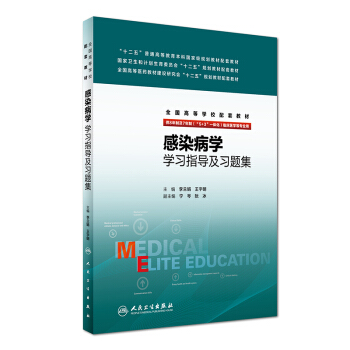
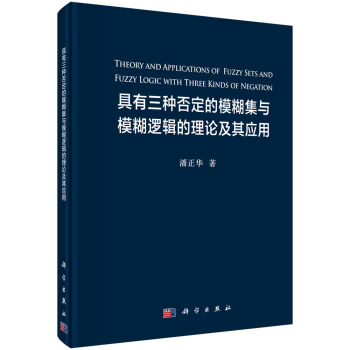

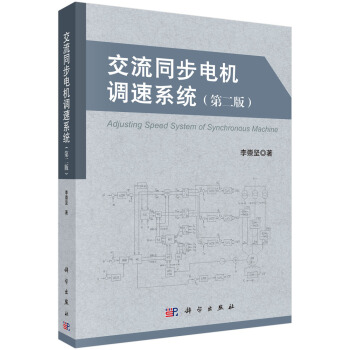



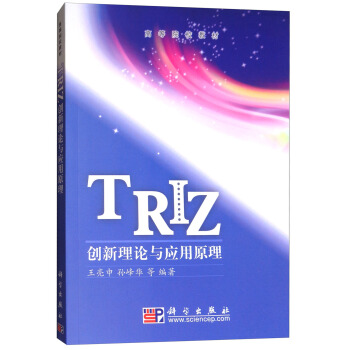

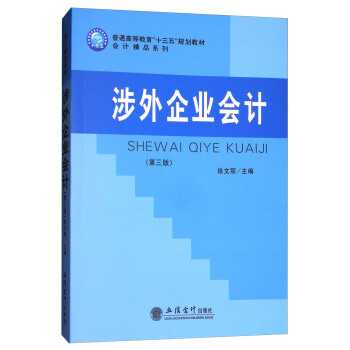
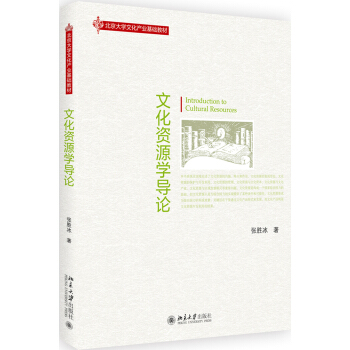

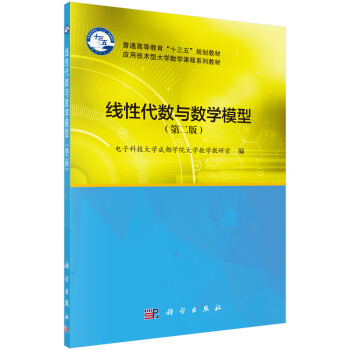
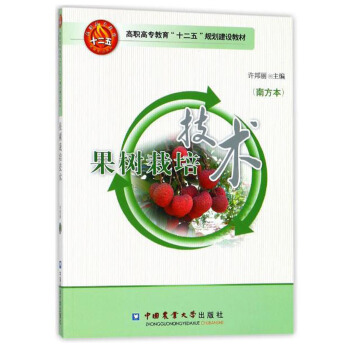

![高級財務管理(第2版)/東北財經大學財務管理專業係列教材 [Advanced Financial Management] pdf epub mobi 電子書 下載](https://pic.windowsfront.com/12323205/5ad06e45N796b9b0e.jpg)
